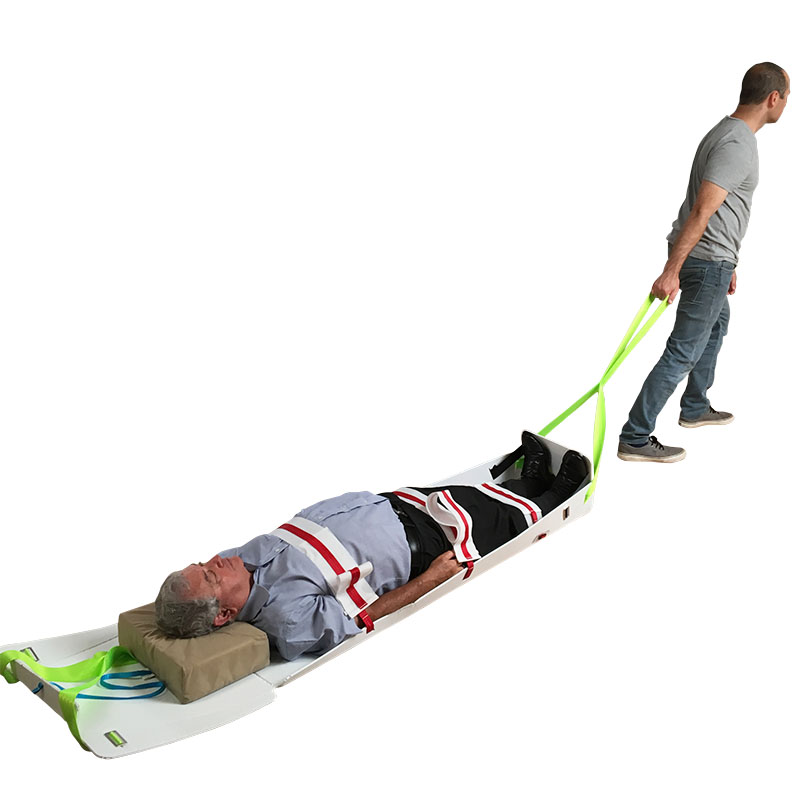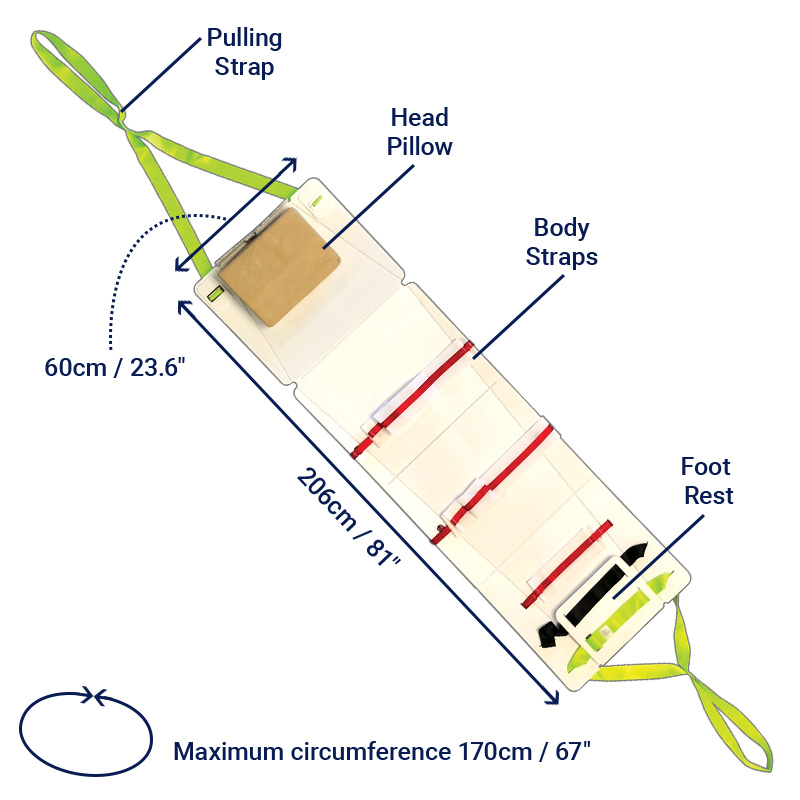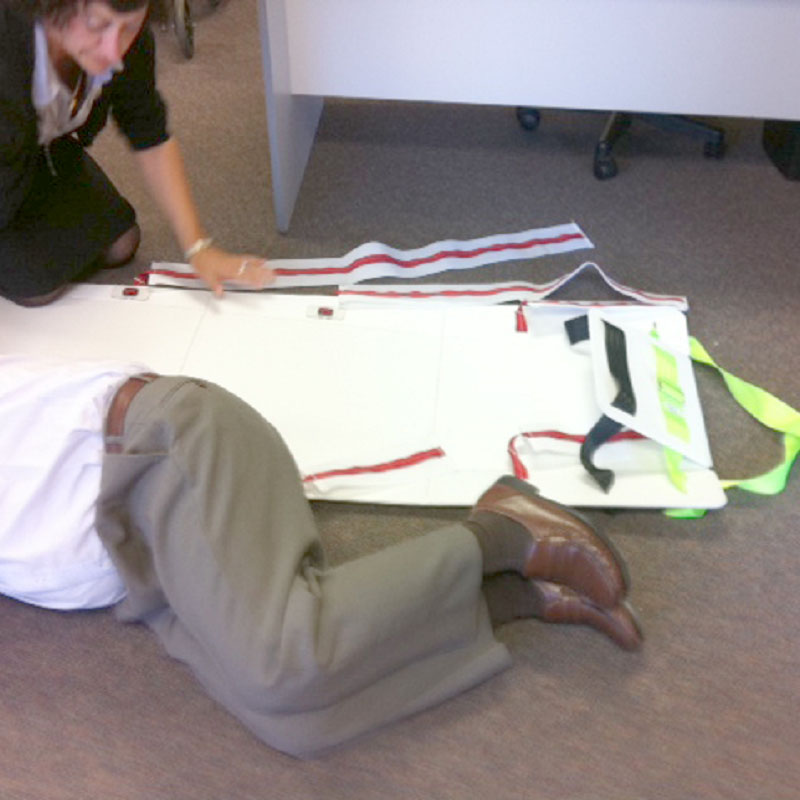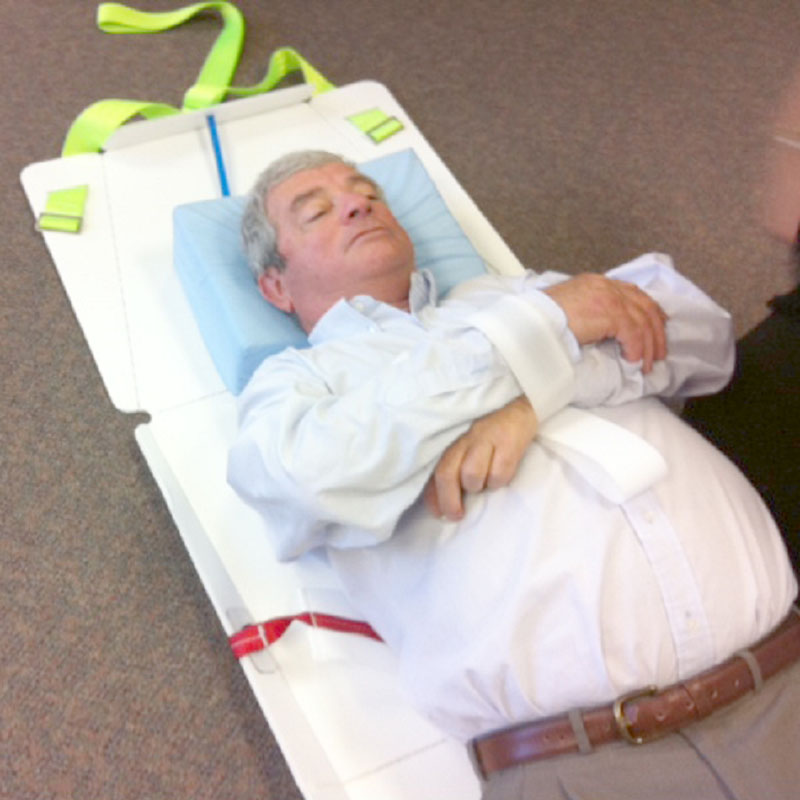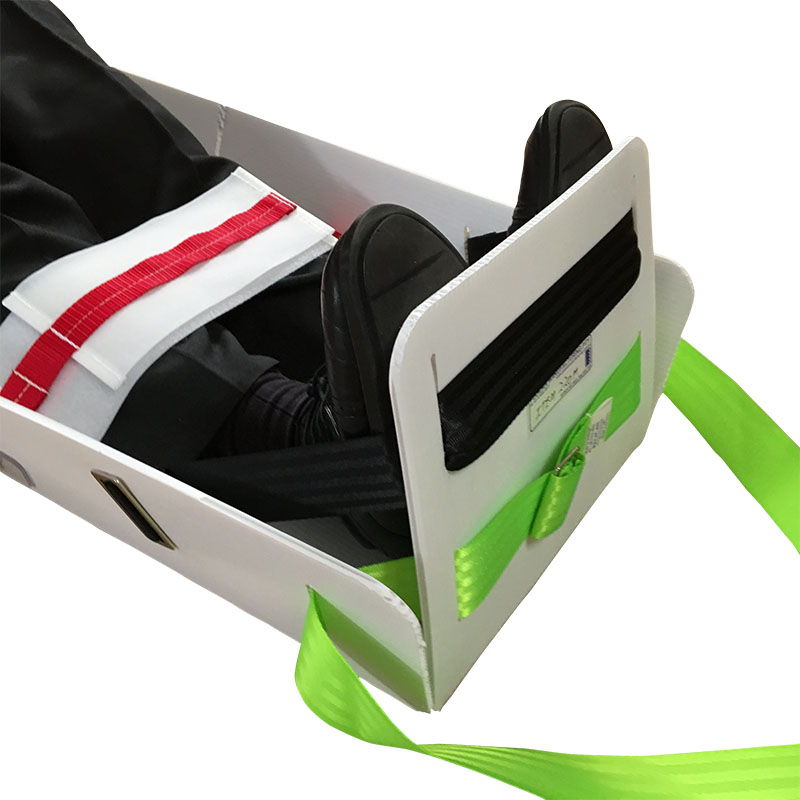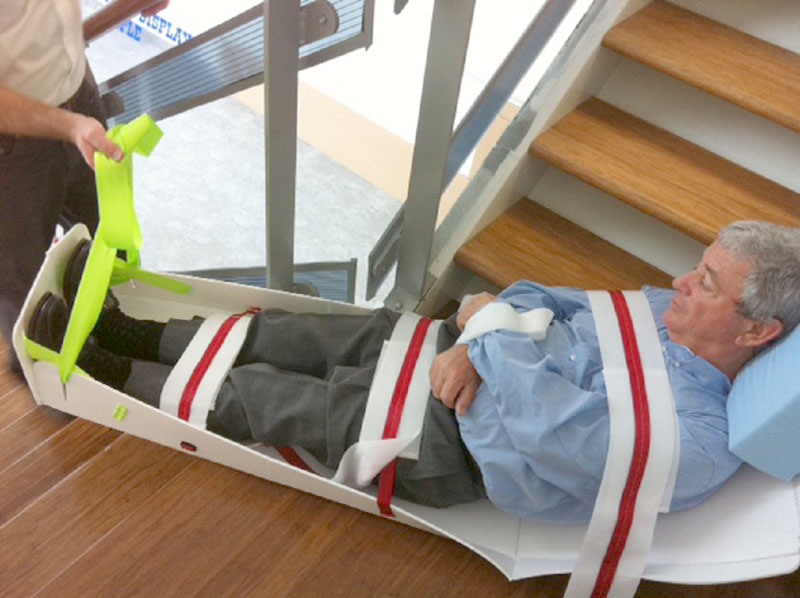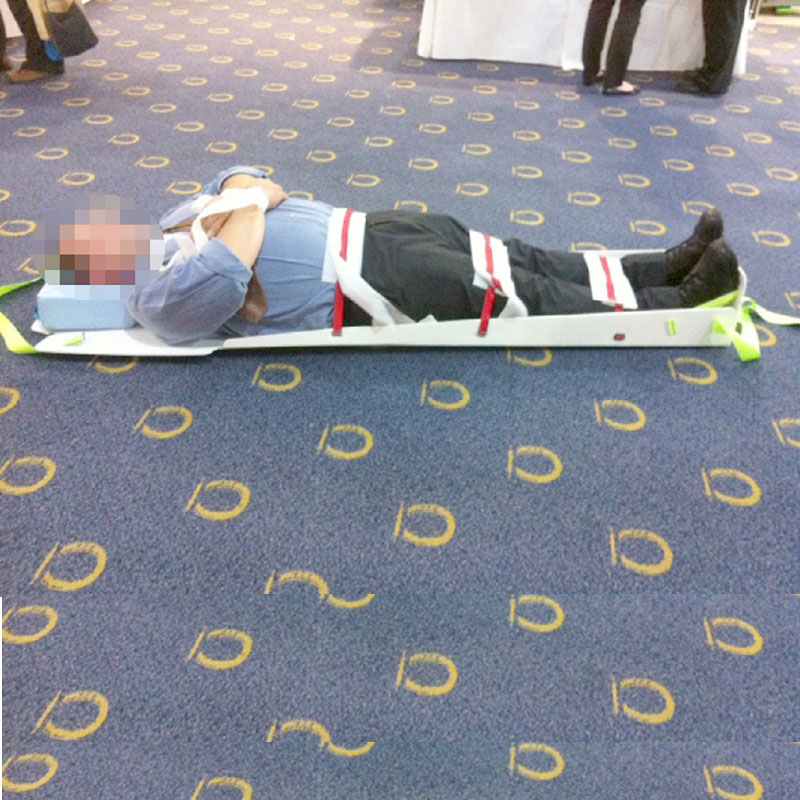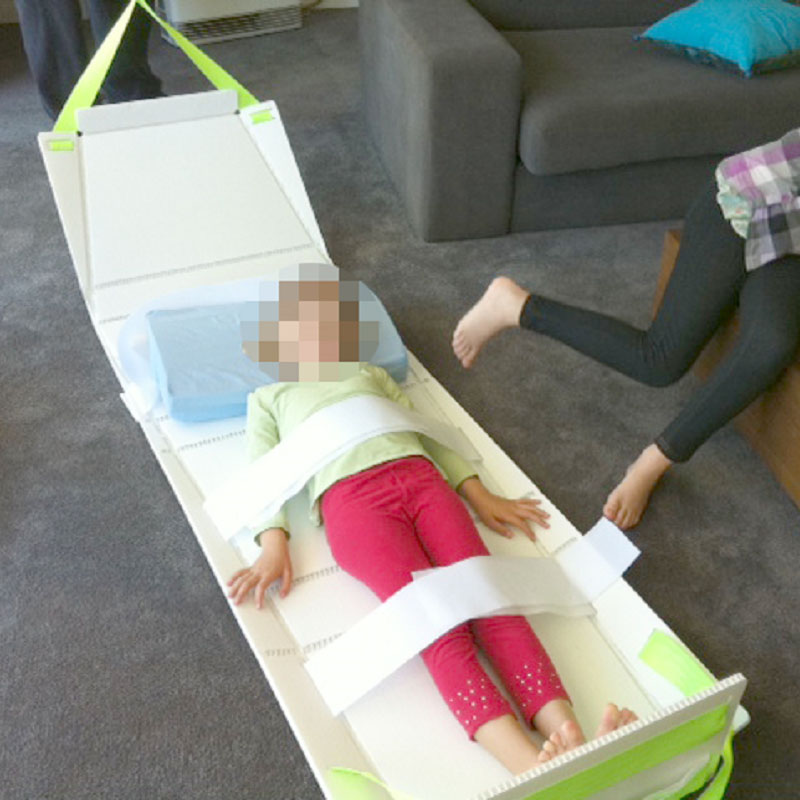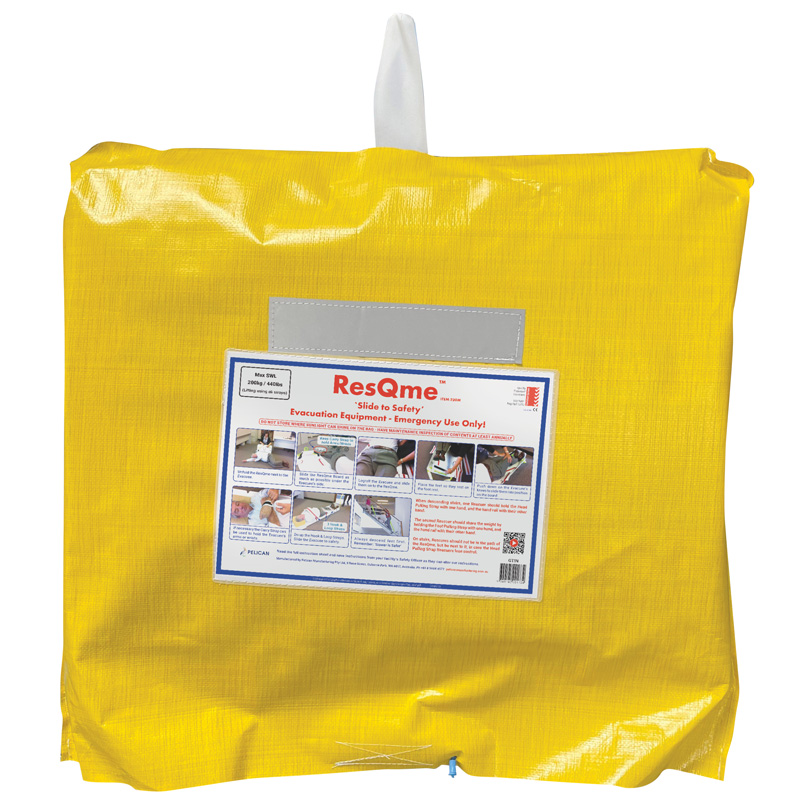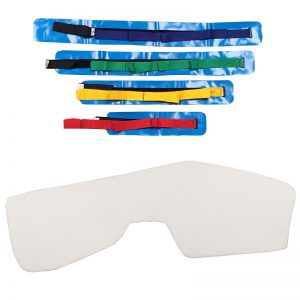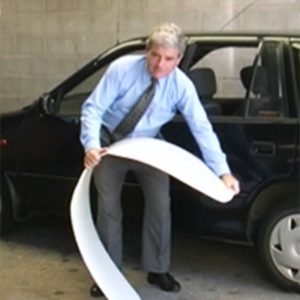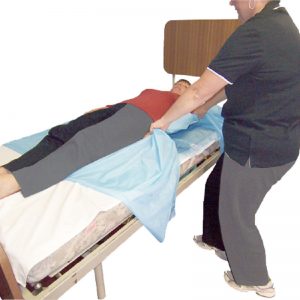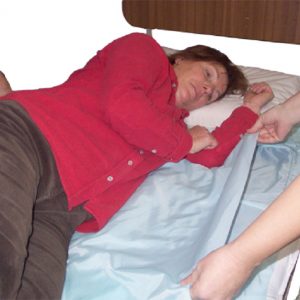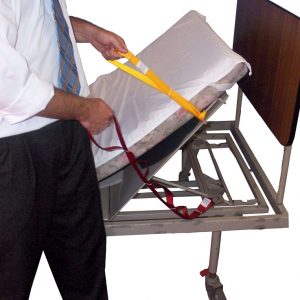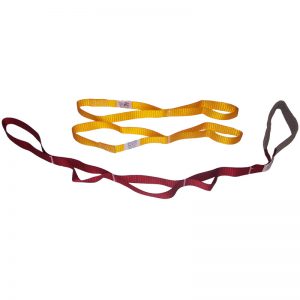WHAT IS THIS PRODUCT?
The ResQme is an evacuation mat used to help evacuate someone from a building, including going down stairs. Similar to a fire extinguisher, it is stored hanging from a wall or in a cupboard.
Some important features of this product are:
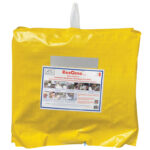 |
High vis yellow storage bag, with instructions |
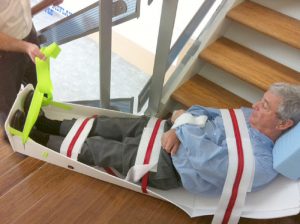 |
ResQpod encloses the evacuee with Hook & Loop Tape. |
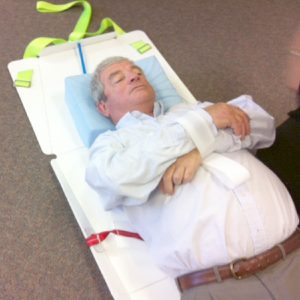 |
The mini head pillow is gives extra projection to the head. |
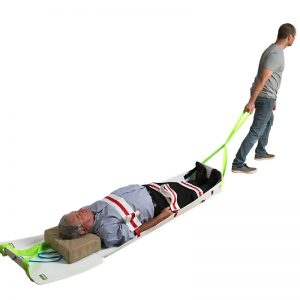 |
Long towing strap at both the head and foot end allow rescuers to pull without bending. |
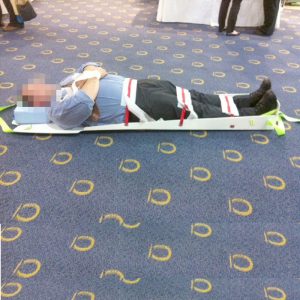 |
The white plastic flute board underneath allows for excellent heat insulation, so the evacuee does not get hurt from the heat generated by sliding. |
WHO IS THIS PRODUCT SUITABLE FOR?
This product may help people who cannot evacuate or walk out of a building, or walk down stairs, during an emergency evacuation. This includes:
- Children being evacuated from a school
- Students being evacuated from a university or college
- Patients being evacuated from a hospital
- People with disabilities being evacuated from a building
BRIEF INSTRUCTIONS FOR USE
Place the evacuee on the ReqQme. If they are in bed, log-roll them. If they are in a wheelchair, consider using the ResQslide Board Kit & Strap. Attach the 4 Hook & Loop Tape Straps. Shorten the orange strap and fasten the black plastic camlock. We recommend sliding feet first, especially down stairs.
WHAT IS THIS PRODUCT MADE FROM?
Foam. Polycotton. Nylon. Webbing. Hook & Loop Tape. Plastic buckle.
WARNING
Be aware that this evacuation mat product is deliberately slippery. Never step or stand on the ResQme. Inspect annually to check the integrity and that it has not been damage by vermin. This product not suitable for spiral staircases.
ALTERNATIVE OR RELATED PRODUCTS
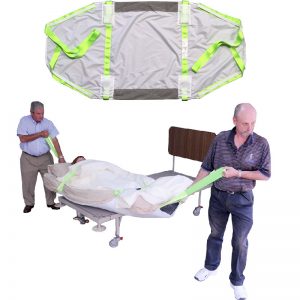 |
ResQsheet |
Stored under the Patient’s mattress on the bed and is ready to use, with the Patient then evacuated with their mattress. Slides well on most vinyl floors. |
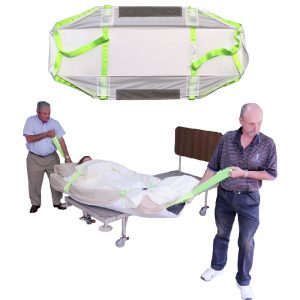 |
ResQsheet for Vinyl & Carpet |
Same as the ResQsheet above, but with a built-in white plastic slide board underneath. Slides well on all floor surfaces including Vinyl & Carpet. |
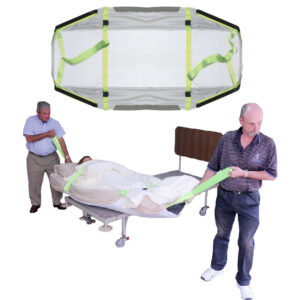 |
ResQsheet for Vinyl & Carpet – Deep & Airflow |
Same as the ResQsheet for Vinyl & Carpet above, but made to fit deep single size beds, and can also be used with pressure care air-flow mattresses. |
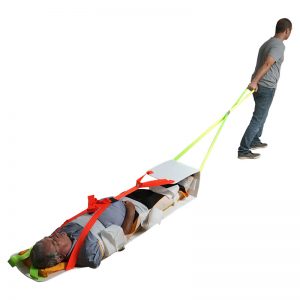 |
ResQpod |
Same as the ResQme, but with more Cross Straps to contain the Patient. |
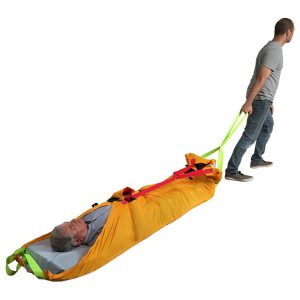 |
ResQmat |
Same as the ResQme and ResQpod above, but with a built-in mini-mattress for comfort, and the side material can enclose the Patient. |
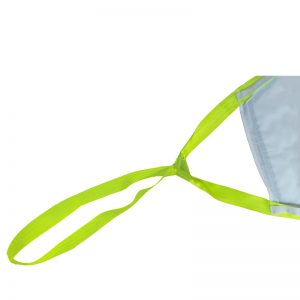 |
ResQsheet Extensions Straps |
The straps can be retrofitted by simply lassoing onto the original towing strap, to allow more rescuers to help. |
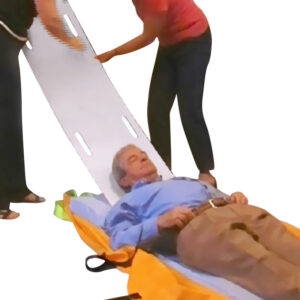 |
ResQslide Board & Chair Strap Kit |
The ResQslide Board & Chair Strap Kit is used to slide someone from a wheelchair to an evacuation device on the floor, such as the ResQmat, ResQpod or ResQme which can slide down stairs. |
STOCK KEEPING UNIT (SKU)
220M
SIZE
- Height: Fits people 4’5″ to 6’6″
- Width: Fits people to a maximum of 67″
WEIGHT
8.5lbs
GLOBAL MEDICAL DEVICE NUMBER (GMDN)
37163
GLOBAL TRADE ITEM NUMBER (GTIN)
9349145001710
DESIGN APPLICATION NUMBER
14534 / 2011
SAFE WORKING LIMIT (SWL)
440lbs (Lifting using all straps)
Note: There is no Standard for this product, therefore we have adopted the testing requirements as set out in International Standard ISO 10535:2011: Hoists for the transfer of disabled persons – Requirements and test methods. This Standard covers testing for mechanical lifting hoists and associated lifting slings. It includes a method for obtaining a SWL for a lifting sling which lifts a person’s entire weight, which Pelican’s range of slings adhere to. We use the same materials, thread and method of stitching our slings, as we do for the ResQ products. Because people’s weight and size may be distributed differently between the chest, stomach and legs, it may be possible that the Cross Straps do not fit some bariatric people. If possible, we recommend this is tested before an emergency occurs. If this is the case, please contact us as we may be able to supply extension Cross Straps.
CLEANING METHOD
Wipe clean.
MAXIMUM WASHING TEMPERATURE
N/A
DETERGENT
Use a mild hospital grade disinfectant.
DRYING METHOD
Air dry in the shade.
CLEANING WARNING
Only use and store the product when it is dry. Test your cleaning chemicals on a discreet area to make sure it will not damage the material.
The ResQme is slippery. Do not step into or stand on it. Keep it away from children. Have regular training from a Manual Handling Advisor on how to use the ResQme as part of the emergency evacuation education. After training, with someone already on the floor, it should take about 1 minute 25 seconds to start pulling them to safety.
Note for Trainers: This product may not be suitable for use on some circular staircases. Ensure all doorways are wide enough to allow this product to pass through. Allow caution when turning corners fast as a high lateral force may make the product roll over, although we are not aware of this ever happening. If evacuating a large bariatric person, it may be necessary to have more than one person pulling. It is good to have the total weight of the people pulling, near to or equal to the weight of the evacuee. Also using the Extension Straps (sold separately) will lengthen the Pulling Straps so more people can hold the straps without being too close to each other. Remember more Rescuers will be needed to hold the weight back when descending stairs.
General Manual Handling Warning: Manual Handling products are designed to assist carers to help patients. They will not make the carer stronger or fitter, but with correct training and use of the products, should make manual handling easier and safer for both staff and patients. When training, practise with an able-bodied colleague. If any procedure is not comfortable or is difficult and puts the carer or patient in a dangerous position, the participants should call out to stop the manoeuvre, recover and recommence. Never jeopardise your health by straining, twisting or being incorrectly positioned when manual handling. Always select the most appropriate equipment for the patient’s current condition and if in doubt, use mechanical equipment. Ask your Manual Handling adviser for individual guidance.













